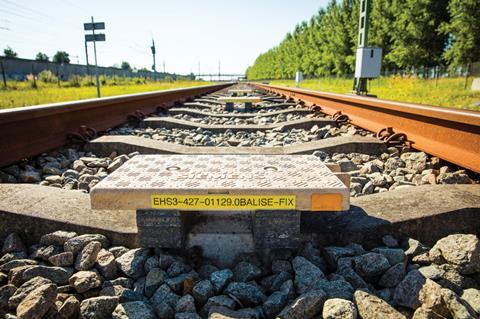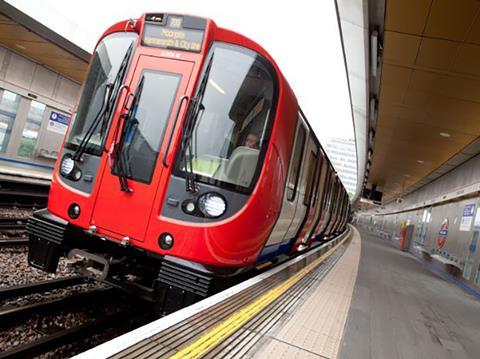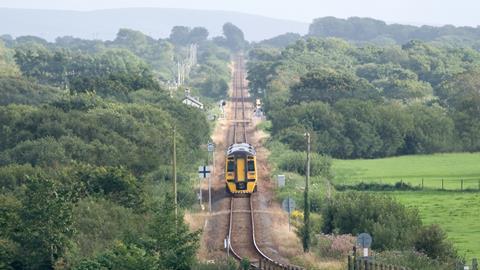There is a real risk that the UK rail sector will fail to capitalise on the potential of next-generation train control technology unless it learns to collaborate more effectively and implement quicker, argues David Palmer of Thales.

It is undoubtedly an exciting time for the UK rail industry, but also a challenging one. The Williams-Shapps Plan has presented us with another once-in-a-generation chance to develop a more integrated, strategic, sustainable and joined-up rail network.
But to achieve that goal, the industry will need to roll out next-generation technology, particularly in signalling and traffic management. This technology will need to cut costs, increase network capacity, and act as a catalyst for decarbonisation. Yet it often seems that we are struggling to bring this step-change in innovation to fruition.
In my view, deploying next-gen technology successfully will require a major shift in how different parts of the rail industry work together to achieve better outcomes. And that will require a different approach to co-operation and collaboration
Let’s look at two technologies specifically to highlight the issue. The first is the Driver Advisory System. Thales offers GreenSpeed, a DAS which links timetable and traffic management with drivers or through the control centre (connected DAS or C-DAS), to optimise rail traffic flow. The result is smoother, more punctual journeys that uses the least amount of traction energy. Typically, GreenSpeed reduces energy consumption by up to 8% for commuter trains, 10% for regional services, 15% for long-distance, and 25% for freight. It also significantly cuts secondary delays, which are responsible for about 70% of delays on the network.
DAS tools like GreenSpeed are a stepping stone to automatic train operation. Together, these automatic and autonomous technologies could save up to 30% more energy as well as open up opportunities for more operational efficiencies.
When total passenger numbers do return to pre-pandemic levels and beyond, we will still have a network unable to cope with demand. So while a lack of passenger seats may not currently be the burning issue it was before Covid-19, 35% of us cite overcrowding in our decision not to travel by rail. Of course, capacity is not just about number of seats. It is also about the ability to run more freight services, or flex the network to support timetable adjustments, or help reduce the effects of disruption. So the second technology we could deploy to ease capacity and reduce whole-life costs is ETCS Level 3.

Simply put, ETCS L3 enables train operation to move away from the fixed signal blocks to an approach where the train essentially becomes the block, with a defined ‘bubble’ around it to ensure separation of trains. In effect, train integrity is moved onboard the train, allowing more trains on the same piece of track.
‘But we haven’t fully deployed ETCS Level 2 yet’, you may say. While that’s true, the UK has been particularly slow to adopt ETCS technology, and it seems the industry is struggling to deploy it at anywhere near the speed we need to reap the rewards anytime soon. This is why I advocate accelerating technical change and leapfrogging to ETCS L3.
More capacity, less infrastructure
Britain still has one of Europe’s most congested railways. Deploying ETCS L3 will help us to manage the network we do have much better, as we are seeing on the London Underground where moving block signalling has already been deployed. It can reduce whole-life costs hugely by eliminating almost all trackside infrastructure and facilitating data-led, condition-based maintenance. But just as important, L3’s moving block signalling technology has the potential to release significantly more capacity on parts of the network.

In C-DAS and ETCS L3, there are two technologies that can help us tackle several of our industry’s major challenges. The question is whether we can deploy them fast enough.
As an industry, we must get better at working together. Over the 12 years I’ve been involved in developing and deploying technology, I’ve seen the same challenges arise and the same mistakes being made across the signalling sector. In fact, on a couple of occasions, it’s been me making the mistakes. It’s fair to say the industry doesn’t have a great track record of deploying technology successfully the first time. In particular, projects that need to integrate new technology with old, or involve work on existing infrastructure that has to keep operating during the deployment, cause particular problems.
Without diminishing the complexity of many first-in-class deployment projects, and with the 20/20 vision hindsight brings, our industry has scored a few own goals. This is often because the sector works in silos rather than along commercial lines, mitigating against an integrated approach to delivery.
This approach serves no one. At the simple end, the same CAD drawings having to be produced three times because the three parties involved all used different CAD systems. At the more costly end, the failure to adopt EULYNX standards industry-wide has prevented different manufacturers’ signalling systems and interfaces from working together easily. The result? Increased costs, reduced competition and extended installation times.
It’s also well-known that technology companies serving the rail industry have a poor track record in delivering complex delivery programmes. Why? Because the industry plans first-in-class deployments on a right-first-time basis. This approach rarely works because the parties involved do not share the outcomes needed to develop a fully integrated programme.
Think big, start small, scale fast
First-in-class technology itself needs proving time, but the industry rarely gets or gives the time or space to learn. Part of the problem is down to specifying products, services or tools on a project basis. And because everything has to be delivered by a certain date, there is no real time to learn as you go, so a project can get bogged down in delays. But if you take a pilot approach and build in time to learn into the budget and schedule, you’re much more likely to succeed.
For example, Thales has recently worked to install an ETCS onboard unit on the Class 43 HST power cars that are more than 40 years old; Network Rail uses these to power monitoring and inspection trains. It took four months to achieve 70% installation on Train 1, but just four weeks to achieve 70% installation on Train 2. And we’re pretty confident we can halve that time again on Train 3 — and all because we learnt how to accelerate deployment as we went. First-in-class programmes need space to fail fast and use the lessons learnt to support the overall roll-out. You may have to negotiate hard over project milestones and completion dates, but the benefits are plain to see.
The industry also needs to rethink how its different parts work together and how they support each other to achieve the best outcomes.
When deploying first-in-class technology and rolling out technology in general, it often makes sense to pull in seasoned expertise and experience from other industries — such as construction and power — especially when working in large-scale and complex environments. In this regard, organisations like Costain and Systra have a lot to offer in the way they manage programme and system integration. Fundamentally, the success of any technology deployment is down to each party having a shared goal and vision for the future.
Collaboration is all about jointly pursuing the same goal and making joint decisions for the greater good. It is critical to build the best team from across the industry, even if this means passing on aspects of a project to an organisation or person you know is better placed to do it.
Working in partnership also creates the right environment to scale quickly from first-in-class to wider roll-outs, which is particularly important given the slow pace of the rail industry’s digital deployment to date. The time to raise the pace of change is now.




